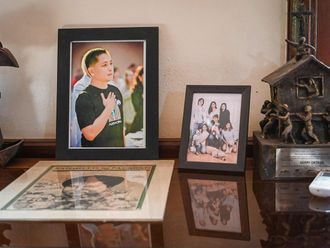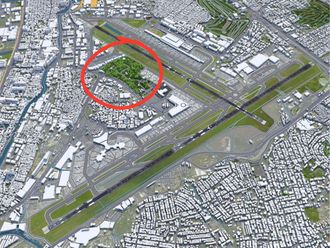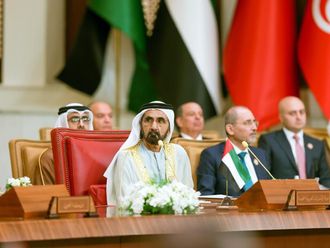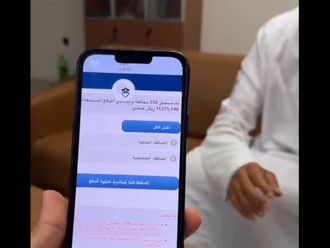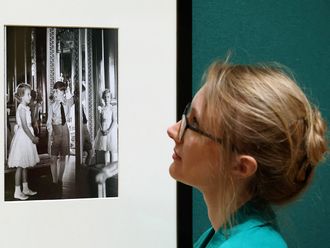Manila: A woman Filipino-Muslim rebel was arrested along with 44 followers in one of the coastal villages that her group had occupied in a southern port city since September 9, sources said, adding that a seaport was opened on the 19th day of the crisis.
Misba Baladji, 70, claimed that she was promised P15,000 (Dh1,083) to join the Moro National Liberation Front (MNLF) in attacking Zamboanga City’s six coastal villages, Police Deputy Director General Felipe Rojas Jr said in a radio interview.
Her husband died while fighting government troops in Sta. Barbara village. Government troops overran her and her 44 followers also in Sta. Barbara village, said Rojas. An earlier report said only 40 of Baladji’s group were arrested.
They were wounded, tired, hungry, and complained of not being paid as promised, said Rojas.
At the same time, six more MNLF rebels were arrested in Sta. Barbara on Friday, raising to 223 the total number of MNLF rebels who were either arrested or have surrendered since September 9, the military said.
Government forces have rescued all of MNLF’s 200 hostages, and retaken most of the MNLF-controlled villages.
However, government troops are yet to arrest failed to arrest MNLF commander Habier Malik who led the occupation of Sta. Catalina Village on September 9.
A joint military and police operation is pursuing him in Kasanyangan, another coastal area, a military source who requested anonymity told Gulf News.
A hostage who was rescued by government soldiers on Wednesday reported that Malik was wounded during a clash with government forces in Sta. Catalina village, Army’s Civil Relations Group commander Lt Col Harold Cabunoc said.
Kasanyangan village is a known escape route from Sta. Catalina village.
Assessing MNLF’s remaining firepower, Lt Col Ramon Zagala said. “They don’t have enough ammunition and food. Their will to fight is gone. The military operation against them will continue.”
But MNLF spokesman Reverend Absalon Cerveza insisted that Malik would not surrender.
With optimism, the local government began a partial operation at Zamboanga City’s seaport.
Four daily round trips from Zamboanga to Basilan, Sulu, and Tawi-Tawi were allowed at the seaport starting on Friday, said Lt J.G. Joemark Angue, station commander of the Philippine Coast Guard in Zamboanga.
Passenger ferries secured clearance from the Naval Forces Western Mindanao command before they were allowed to sail to and from Zamboanga City.
Prior to sailing for Zamboanga City, inspection was imposed on incoming vessels from point of origin; at sea, near Sta. Cruz Island; and at Zamboanga City’s seaport, said Angue.
Zamboanga City’s international airport opened last week. Busses started operating, but were banned from plying routes to some 14 affected coastal villages.
MNLF founding chairman Nur Misuari has been identified as the mastermind of the Zamboanga siege.
He signed two pro-autonomy peace accords with the Philippine government in 1976 and 1996.
In reaction to the 1976 pro-autonomy peace settlement, the Moro Islamic Liberation Front (MILF) became a faction of the MNLF in 1978.
But the MILF gave up its secessionist stance when it responded to the Philippine government’s pro-autonomy peace initiative in 1997. The two parties forged in 2012 a framework agreement on enhanced self-rule on a wider autonomous area in the southern Philippines.
Misuari resented being sidelined in the making of the final draft of the Philippine government-MILF peace agreement. He was also against the Philippine government’s alleged decision not to continue reviewing, together with the Organization of the Islamic Cooperation (OIC), the implementation of the 1996 Philippine government-MNLF peace agreement in the south.



